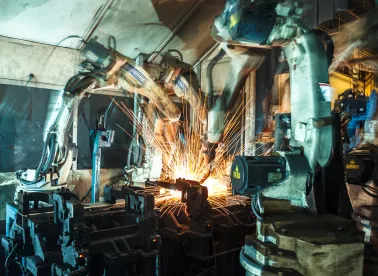The Original Equipment Suppliers Association (OESA) 2020 annual automotive conference, conducted virtually this year, wrapped up on November 11 under the theme “Journey Back to the Future.” And what a journey it has been. After a couple months of non-production in the Spring, the industry has played a leading role in bringing the U.S. economy back closer to the footing where it started in the first two months of the year. The concluding presentations included an Industry Outlook panel themed as “Resilience in Recovery,” and a look at the current AV market from Bryan Salesky, Founder and CEO of Argo AI.
The Industry Outlook panel, moderated by Mike Jackson, Executive Director, Strategy & Research, at OESA, featured Kevin Depew, Deputy Chief Economist, National Industry Eminence Program Leader, RSM US LLP; and Michael Robinet, Executive Director, Automotive Advisory Services, IHS Markit. Depew began with an economic review of the roller coaster ride of the last two quarters. This included two of the worst and best quarters ever – in succession – minus 31.4% in Q2 and plus 33% in Q3, following a 5% dip in Q1! The K-shaped recovery that is in process (which K-shape he noted resembles the economy of the last 20 years) is projected to result in increased GDP of 2.25% in Q4, which may stall out as a second wave of COVID-19 takes hold. Depew noted that while the economy has recovered, new weekly claims for unemployment remain at historically high levels, spiking at 7 million in the late March/early April period while still averaging 787,000 over the last four weeks (compared to 665,000 weekly claims at the peak of the 2008-2009 Great Recession). Consumer spending has dampened the blow, with spending falling 7.1% in the top two quintiles of income (which account for 60% of spending), rising .3% in the lowest income quintile, and averaging a 3.8% drop since January. Given the net savings rates in the top two quintiles, this may point to pent up demand for consumer spending as a driver of economic improvement in 2021.
Michael Robinet then reviewed the current state of the automotive market, starting with a global picture. He showed a 2020 V-shaped graph that looked reminiscent of 2008-2009, with a steeper descent and a steeper recovery. Global production is expected to decrease from 95.1 million units to 73.0 units in 2020, a 23% drop. Global automotive capacity utilization in 2020 is expected to reach only 69% in Europe, 68% in China and 71% in North America according to Robinet, who highlighted efficiency and utilization of assets as a major potential differentiator going forward. For North America, IHS forecasts total vehicle production of 13.0 million units in 2020, increasing to 15.9 million units in 2021 on the heels of greater U.S. demand and low inventories of some models, and leveling out at 16.3 million and 16.2 million units in 2022 and 2023, respectively. In North America, OEM brands in the ”other” category (folks like Tesla, Subaru, Rivian, Mazda and Volvo) saw a less steep decline in 2020 and may see a faster improvement over the next three years, according to Robinet. IHS also forecasts a snap back in China, driven in part by BEVs, and a more gradual recovery in Europe. Robinet noted that “secular factors will drive difficult choices” as CO2 standards diverge in the major markets, with the possibility that the “EU and China will take [the global EV] lead in possibly the greatest structural shift our industry has witnessed in a century.” At the same time, he noted that this trajectory could change post 2023-24 with a new Democratic Administration in the U.S. He also noted that China and Europe will not take a back seat to the U.S. in ADAS going forward, after the U.S. had built an early advantage in this area.
The conference ended with a presentation by Bryan Salesky, CEO of AV company Argo AI. Argo has raised $2 billion in outside funding from Ford and VW (with the last round valuing the company at $7.25 billion), and has established key relationships with both Ford and VW in the AV space. Salesky began by reviewing the AV landscape in the major world markets, noting the consolidation that is taking place in the U.S. and the increased investments in simulation, map tooling and other virtual productivity. In Europe, additional and rigorous due diligence is still needed to deploy, with investment required for data privacy as well as a need for additional driverless and mobility legislation. Finally, for China, Salesky noted that access to the market requires partnering, which is made more difficult by trade tensions and IP transfer requirements. He further noted that U.S. companies have invested $18 billion in AV technologies, nearly 70% of the global spend. To facilitate further development in the U.S., he noted the need for additional safety standards development and a rationalization of the “patchwork” of state and federal regulation.
If one could create a virtual word cloud for the day, the word “COVID” would be the biggest cloud (and IS the biggest cloud over us), followed by “EV,” with “AV” taking more of a backseat vis-à-vis prior years. I look forward to attending an in-person OESA Annual Conference next year after I have been fully vaccinated and caffeinated (as in past years).




 />i
/>i

